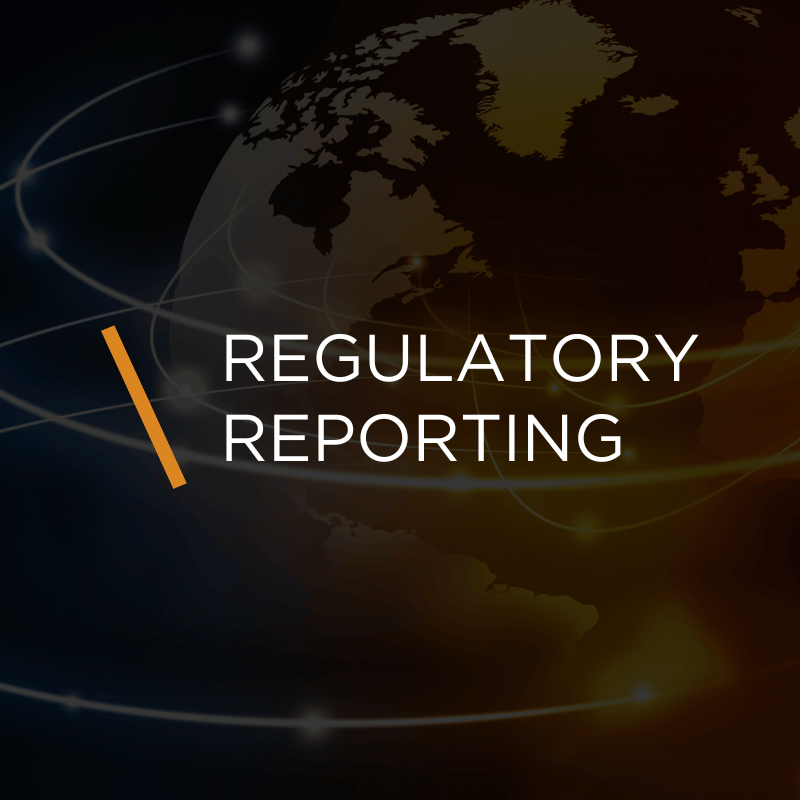When the European Commission announced back in March 2018, a proposal to amend the Alternative Investment Fund Managers Directive (AIFMD), in order to provide for a uniform regime for “pre-marketing” of alternative investment funds (AIFs) across Europe, there were many commentators that declared that “AIFMD II had finally arrived”.
Admittedly, one of the main concerns with the EU Market Passport was the different marketing requirements that exist between members states, and uncertainty over defining “marketing” and “pre-marketing” – Fund Managers had found it difficult to utilise the passport due to the differing approached from various national competent authorities. However, other than this, disappointingly, very few other issues with AIFMD were addressed.
AIFMD II it was not.
Under AIFMD Article 69, the EC is required to conduct a review of the Directive. The review was required to be conducted by 22nd July 2017 and provide analyse of:
- The experience of applying the AIFMD;
- Its impact on investors, AIFs or AIFMs, and in the EU and in third countries; and
- The degree to which AIFMD’s objectives have been achieved.
In December 2018, a report was prepared by KPMG which provided an assessment and evidence for the European Commission’s review of AIFMD pursuant to Article 69 AIFMD.
In June 2020, the European Commission (EC) published a further report in accordance with Article 69 on the application and scope of AIFMD. The report assessed whether the specific rules of the AIFMD are effective, efficient, coherent and relevant. The 11 page report however, was disappointing, and unfortunately raised as many questions, as it did answers.
Last week, ESMA published a lengthy letter to highlight some of the areas of AIFMD that could be improved. Additionally, the letter highlighted potential changes to the UCITS framework.
How many of ESMA’s recommendations will find their way into a meaningful AIMFD II? Below we highlight the 19 key areas ESMA has made recommendations for:
Harmonisation of AIFMD and UCITS regimes
ESMA believes that the AIFMD review is an occasion to consider greater harmonisation of the UCITS and AIFMD frameworks. In many instances, the AIFMD requirements are more specific than those seen under the UCITS Directive. One particular area ESMA would like to see greater harmonisation is around the liquidity requirements.
ESMA continues in the letter by stating that under the current regimes, applying different requirements to management companies which manage both UCITS and AIFs creates additional burdens for the firms concerned and divergences in supervisory/regulatory outcomes.
ESMA has recommended that the EC should consider aligning the frameworks “where appropriate”.
Harmonised reporting for UCITS
ESMA considers the harmonisation of reporting to be of particular importance, and supports the ESRB recommendations on liquidity and leverage risks in investment funds. The ESRB recommendations provide for the introduction of a harmonised reporting regime for UCITS management companies.
In the letter, ESMA state that once improvements to AIFMD Annex IV reporting have been made, harmonised UCITS reporting should generally be aligned with those requirements, while allowing for tailoring to the characteristics of UCITS funds.
In the letter, ESMA also notes that:
- The reported data should allow for sufficient monitoring of potential vulnerabilities that may contribute to systemic risk
- Lessons should be learnt from the Money Market Fund (MMF) reporting regime which allows the same information to be used for both supervisory purposes and for systemic risk monitoring
- It does not have access to UCITS data which creates a sub-optimal situation requiring the need for extensive ad-hoc data requests
Scope of additional MiFID services and application of rules
ESMA has indicated the need for further legislative clarifications on the scope of permissible business activities listed in Article 6(4) of the AIFMD and Article 6(3) of the UCITS Directive.
NCA’s have expressed divergent views on whether AIFMs and UCITS management companies could be permitted to perform business activities other than those explicitly listed. This has resulted in a list of permissible business activities in some Member States being broader than in others.
ESMA would like to see clarifications on the application of rules when providing services pursuant to Article 6(4) of the AIFMD and Article 6(3) of the UCITS Directive.
Additionally, ESMA also sees merit in providing for a greater regulatory consistency and level playing field between AIFMD/UCITS and MiFID in order to ensure that entities providing similar types of services, such as marketing, are subject to similar regulatory standards.
Delegation and Substance
With respect to delegation and substance requirements, ESMA has provided that it would like to see further clarification in the AIFMD and UCITS frameworks. In the letter, ESMA outlines the following areas of concern:
- Extent of delegation
- Applicable regime in case of delegation and regulatory arbitrage
- Use of seconded staff
- List of collective portfolio management functions and distinction from ‘supporting tasks’
- White-label service providers
See our separate blog which focuses on the above 5 areas.
Availability of Additional Liquidity Management Tools
ESMA believes that the availability of additional liquidity management tools (LMT) should be consistent throughout all EU jurisdictions.
In ESMA’s opinion, the Commission should take the opportunity of this AIFMD review to include availability of all LMTs outlined in ESRB’s Recommendation on liquidity and leverage risks in investment funds.
Additionally, ESMA has also proposed that the availability of tools should also be included in the UCITS Directive, noting that some tools will not be suitable or necessary for all types of funds, e.g. side pockets.
Leverage
AIFMD has two measures of leverage calculation, the gross notional exposure (GNE) method and the commitment method.
ESMA sees merit in the IOSCO recommendations issued in December 2019 recommending a two-step approach for assessing leverage in investment funds:
- Step 1 uses measures of leverage as baseline analytical tools to identify funds that may pose a risk to financial stability.
- Step 2 entails a risk-based analysis of the subset of funds identified in Step 1.
The goal of Step 1 is to provide regulators with a means of efficiently identifying those funds that are more likely to pose risks to the financial system, using at least one notional exposure metric outlined by IOSCO in its report:
- GNE without adjustments reported broken down by asset class, long and short exposures; and/or
- adjusted GNE reported broken down by asset class, long and short exposures.
Moreover, ESMA has proposed amending the commitment amount calculation by adjusting the notional amounts of interest rate derivatives contracts by the duration of the ten-year bond equivalent.
AIFMD Reporting Regime and Data Use
ESMA has conducted a separate ad-hoc analysis of the issues regarding the AIFMD reporting regime and data use.
The analysis and recommendations include:
- Obligation to acquire an LEI for the manager and its funds
- Detailed information on the composition of assets and liabilities of the fund
- Definition of leveraged fund
- Timeline for the NCAs to update ESMA register
- Reporting in percentages
- Restrictions in the use and publication of the reported data
- Reporting exemptions for Private Equity funds
- Requirement to report ESG metrics
- European mandate for ESMA and ESRB to analyse systemic risks
See our separate blog which reviews the above in greater detail.
Harmonisation of Supervision of Cross-Border Entities
ESMA considers that there is a lack of clarity in what the precise responsibilities of home and host supervisors are in some cross-border marketing, management and delegation cases.
In the letter, ESMA outlines that due to AIFMs often delegating a variety of functions to multiple third parties across different Member States, there needs to be clarification of the supervisory responsibilities regarding cross-border activities within the internal market.
Semi-professional investors
There is currently no definition of “semi-professional” investor in AIFMD. In turn, ESMA has identified a wide variety of definitions across the EU on what constitutes a “professional investor”, and a wide variety of treatments of the status of “semi-professional” investors under NPPRs.
Due to this, ESMA has recommended clarity be provided around the definition of “professional investors” under AIFMD.
Loan origination in AIFMD
ESMA has put forward that there should be a specific framework for loan origination within the AIFMD. In the letter, ESMA makes reference to its 2016 opinion on key principles for a European framework on loan origination by funds.
The ESMA opinion contains recommendations on authorisation for loan originating funds and provides organisational and prudential requirements for loan-originating funds such as:
- Leverage,
- Liquidity,
- Stress testing,
- Reporting, and
- Diversification
Application of depositary rules to CSDs
ESMA recommends that AIFMD be clarified to allow depositaries not to apply the delegation rules to CSDs in their capacity as Issuer CSDs.
However, depositaries should be required to apply the delegation rules to CSDs in their capacity as Investor CSDs.
Furthermore, this change should also be made in the UCITS Directive when it is reviewed.
Proportionality principle for remuneration requirements
ESMA wrote to the Commission in 2016 requesting clarification of the application of the proportionality principle in both AIFMD and the UCITS Directive. Following on from this, ESMA remains adamant that clarification is required to make clear that the proportionality principle applies to the full set of remuneration requirements.
Failure to apply the proportionality principle in all circumstances could lead to a disproportionate application of the quantitative variable remuneration thresholds and payout structures.
Sub-thresholds AIFMs
AIFMD exempts small AIFMs (AuM of €100mn including assets acquired through use of leverage or €500mn in case of management of only unleveraged AIFs that have no redemption rights exercisable during a period of 5 years) from most of the Directive but leaves discretion to Member States on what to require from such sub-threshold AIFMs.
ESMA notes that some NCAs would prefer to have an explicit EU legal basis for Member States to introduce additional national requirements, with a view to supervising sub-threshold AIFMs sufficiently.
ESMA has recommended that the Commission provide clarification on the power of Member States to apply additional requirements under their national law to sub-threshold AIFMs.
External valuer liability
The AIFMD provisions state that “the external valuer shall be liable to the AIFM for any losses suffered by the AIFM as a result of the external valuer’s negligence or intentional failure to perform its tasks”.
In certain jurisdictions, the reference to negligence is interpreted as covering not only ‘gross negligence’ but also ‘simple negligence’, acting as a disincentive for external valuers due to liability concerns.
ESMA believes that the definition of “negligence” could be limited to “gross negligence” in the legislation.
Amendments to definitions
ESMA would like to see further definitions concerning AIFs and specifically, implementation of a definition for:
- General commercial or industrial purpose in connection with real estate projects,
- Pooled return in general, and
- Investment policy.
Additionally, ESMA would like to see harmonisation and clear rules on the issuance of certificates, and crypto assets, which might under some interpretations fall within the scope of the AIFMD.
Clear definition and rules for reverse solicitation
In order to provide greater protection to investors, ESMA has briefly highlighted the importance of clarifying the notion of reverse solicitation mentioned in Recital 70 of the AIFMD, which is currently subject to divergent practices and interpretation at national level.
Convergence in treatment of significant influence
ESMA is of the view that further consideration should be given to the possible significant influence fund managers may exercise over the management of an issuing body. Whilst AIFMD does not provide for specific requirements on this issue, Article 56(1) of the UCITS Directive aims at ensuring that UCITS managers may not exercise significant influence over the management of an issuing body
In the letter, ESMA believe there is merit in clarifying that the calculation of the limit laid down in Article 56(1) is not limited to common funds or UCITS alone, but also covers:
- Voting rights stemming from AIFs managed by the same fund manager with similar strategies in relation to the exercise of significant influence, i.e. excluding for example private equity funds in case of dual authorisation under the UCITS Directive and AIFMD,
- Portfolios managed on a discretionary basis by the manager and,
- Where permitted, investments made by the fund manager on its own account.
Increasing Digitalisation in AIFMD
ESMA would like the Commission to allow more digital communication instead of paper form. For example, Article 8(5) AIFMD on applications for authorisation states that the home NCA of the AIFM “shall inform the applicant in writing”. ESMA has recommended amending this provision to all applicants to inform NCA via electronic format.
Depositary Passport
ESMA notes that there has long been a discussion in the EU on the merit of a depositary passport, since the UCITS II debate in 1993 at least. While not recommending the creation of such a passport in AIFMD and the UCITS Directive, ESMA believes the Commission may study the benefits and risks further in the context of the AIFMD Review.
What’s Next?
The European Commission will give these recommendations significant thought as part of the AIFMD review. It is expected that in the not to distant future, the EC will publish a detailed consultation paper, which should include many of the recommendation outlined above. Once this is published, we should have a better idea of what the future holds for the various issues of AIFMD. Should the Commission decide to propose changes to the existing legislation, these are unlikely to be published until the middle of 2021.
How Funds-Axis can help
Funds-Axis support a broad range of global regulator reporting requirements.
Our solutions perform all the relevant calculations, automatically applies all the relevant data taxonomies and enables one-click generation of the required regulatory reports.
Our solution enables organisations to rapidly comply with these regulations, without the need to develop costly in-house solutions. The cost of compliance is significantly reduced through plug-and-play functionality, integrated data availability, automated report production and through availability as a hosted software as a service solution.
Our regulatory reporting solutions include:
Request A Demo
Error: Contact form not found.











